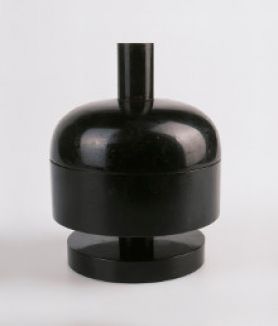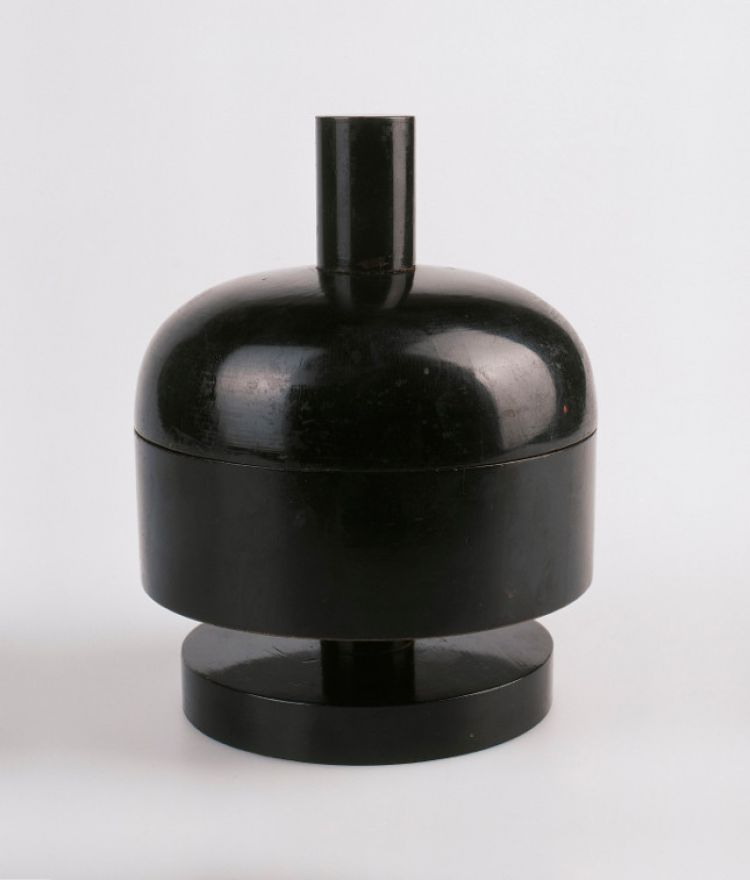Dada Cup

Trainedin the decorative arts from the mid-1910s in the schools of St. Gallen, Munich and Hamburg, Sophie Taeuber-Arp developed a formal geometric language resulting from her work on textiles, as well as a pronounced taste for de-compartmentalizing artistic disciplines, giving her a special position within the Dada group. The year 1916 was decisive for her: she became a teacher at the Zurich School of Arts and Crafts, began "expressive dance" under the instruction of Rudolf von Laban and began frequenting the Cabaret Voltaire. The fact of combining all these activities led Taeuber-Arp to work towards a total synthesis of the arts. Her combined skills in the decorative arts and dance earned her commissions for choreographies, stage decors and puppets.
The Dada Cup, made in 1916, is an essential product of this period of the artist’s activity and, more generally, of the artistic emulation then being practised by the international avant-garde. In its simplicity and the purity of its forms, the object reveals its affinity with the concerns of Mondrian and Van Doesburg and, by anticipating the research of the Bauhaus, it takes its place as a milestone in the history of design. It is also an abstract sculpture, turned and lacquered, foreshadowing the series of "Dada Heads" of the years 1918-1920. Situated at a crossroads between different genres, this work is representative of Sophie Taeuber-Arp's production, focusing on the harmony of simple things without forgetting their decorative value.
